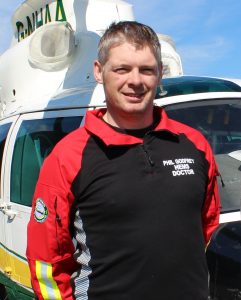New blood warmers are being used by the Great North Air Ambulance Service (GNAAS) to deliver lifesaving blood transfusions.
The charity recently purchased the MEQU blood warming system to bring further improvements to the way it performs blood transfusions throughout the region. The system includes a power pack and single use warmers, and can be easily set up in 30 seconds.
In the pre-hospital environment, every minute counts, and it was previously identified that upgrading the blood warmers could help some of the most critically ill or injured patients by getting warmed blood transfused quicker.
Patients with substantial bleeding are at risk of entering the lethal triad of hypothermia, acidosis, and coagulopathy. This combination means that when the body core temperature drops (hypothermia), the acidity in the blood increases (acidosis) and the blood loses its ability to clot, making it more difficult to stop the bleeding (coagulopathy).
The new portable fluid warmers can warm up blood from cold to body temperature within seconds, making it safe to administer to the patient and help prevent hypothermia and the complications from hypothermia.
GNAAS doctor Phil Godfrey said the new blood warmers were already having an impact:
“Every day we take delivery of a box which contains two units of red blood cells and two units of fresh frozen plasma to use on our patients if they need it.
“This has to be stored at a certain temperature somewhere between two and six degrees and it’s important it’s kept at that temperature to make sure it lasts and is fresh.
“But our problem is we can’t give it at that temperature, it wouldn’t be good for patients, so we have to warm it up before it’s transfused.
“We weren’t really happy with the system we were using beforehand, the system we had didn’t get the blood very warm and it also didn’t allow us to give it very quickly.
“So we’ve introduced a new warmer called the MEQU and we’ve used it about a dozen times and what it does really effectively is it gets that blood up to body temperature up to 37 degrees and it also doesn’t restrict the flow at all so it allows us to give it very fast which is absolutely lifesaving if someone is bleeding to death.
“We’ve had really positive feedback so far from all the crews that have used this system.
“It’s really making a difference to patient care and allowing us to get that blood in nice and fast at a good temperature and get patients to hospital alive.”





